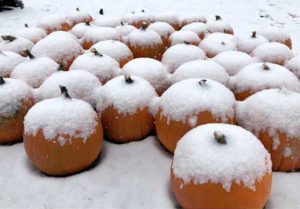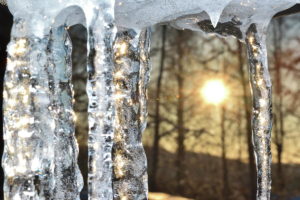by D. Normile, Sep 29, 2020 in Science AAAS
China’s surprise pledge last week to cut its net carbon emissions to zero within 40 years has reignited hopes of limiting global climate change to tolerable levels. The country is the world’s largest producer of carbon dioxide (CO2), accounting for 28% of global emissions, and its move may inspire other countries to follow suit. But observers warn that China faces daunting challenges in reaching its goals. Kicking its coal habit will be particularly hard.
“We aim to have CO2 emissions peak before 2030 and achieve carbon neutrality before 2060,” Chinese President Xi Jinping told the United Nations General Assembly via a video link on 22 September. That’s “a very significant and encouraging announcement,” says Josep Canadell, an earth system scientist at Australia’s Commonwealth Scientific and Industrial Research Organisation. He says the new targets “won’t likely let us to stop at 1.5° Celsius [of global warming],” the preferred target set in the 2015 Paris agreement. “But below 2° might still be consistent with [Xi’s] announcement.” China’s commitment also “ratchets up pressure on other major emitters” to set more ambitious targets “while further isolating the Trump administration in its climate myopia,” Vance Wagner of Energy Foundation China wrote in a piece published online by the nonprofit China Dialogue.
China had previously said its CO2 emissions would peak “around” 2030, a target most analysts considered within reach. But achieving carbon neutrality before 2060 will require drastically reducing the use of fossil fuels in transportation and electricity generation and offsetting any remaining emissions through carbon capture and storage or planting forests.
by Ben Webster, Oct 27 in TheTimes
Sandy beaches are much less vulnerable to rising seas than was claimed in a recent European Commission study which caused “unnecessary alarm”, research has found.
Beaches will survive by migrating landwards as the sea level rises as long as they are given space to move and not impeded by sea walls and other structures on the coast, the research
The new findings contradict claims made in March in a study by the commission’s joint research centre, which supplies scientific evidence to guide EU policy.
…

See also: Satellite Data: 75% Of The World’s Beaches Are Stable Or Growing
Analysis of satellite derived shoreline data indicates that 24% of the world’s sandy beaches are eroding at rates exceeding 0.5 m/yr, while 28% are accreting and 48% are stable.
…
by EU Science Hub, Oct 2020
The Atlas provides a better understanding of the consequences climate change and human actions have for the planet’s surface water resources.
It is impossible to overstate the critical importance of water in our daily lives. Surface water bodies – including lakes, ponds and rivers – are particularly important as sources of water for domestic, industrial and agricultural use.
As the Earth’s surface water is intensely dynamic, our knowledge about where waterbodies can be found has not always been accurate. Waterbodies move, whole lakes dry up and new rivers and lakes form, which makes mapping these moving targets difficult.
Building on a project that combined thousands of years of computer time with millions of satellite images, the JRC’s Atlas of Global Surface Water Dynamics describes the important role that surface water plays for our planet’s climate and biodiversity, as well as virtually every aspect of our daily lives.
The Atlas documents the science behind a set of truly unique maps, which include time, and illustrates the changes in surface water resources over the past 35 years.
The scientists believe that the Atlas can improve our understanding of the consequences of climate change and human action on surface water resources, and that clearer understanding can help decision-makers to plan environmental actions and design effective policies aimed at the sustainable management of surface water resources.
…

Mapping the history of water
…
by B. Lyman, Oct 27, 2020 in ClimateChangeDispatch
More than 20 million Americans are under some sort of winter weather watch, warning, or advisory from the Southwest through the Midwest as of Monday.

The Weather Channel has dubbed the storm “Winter Storm Billy” and said the storm will bring snow throughout parts of the Southern Rockies, the Central Plains, and Missouri.
From Arizona to Wisconsin, residents could see snowfall Monday, while those further south, like in Texas and Oklahoma, will see freezing rain and sleet, according to CNN.
Ice in Texas and Oklahoma is expected to accumulate roughly half an inch, which could cause dangerous travel conditions and knock power out, per the same article. Oklahoma City is under an Ice Storm Warning.
Temperatures in North Texas are roughly 25 degrees Fahrenheit below average. Texans living in the Texas Panhandle area could see one to two inches of snow during the area’s first Winter Storm Warning of the season, according to CBS Dallas-Ft. Worth.
While temperatures in Arizona won’t be as cold as some other states, some areas in the state could see a low of 46 degrees on Tuesday — the first temperature in the 40s since March, according to AZ Central.
Some areas of Colorado and New Mexico are expected to see two feet of snow, which comes as a bit of relief as wildfires continue to rage in Colorado’s Boulder and Larimer Counties, according to The Denver Channel. In Aguilar, Colorado, there were already 14 inches recorded from snowfall Sunday into Monday, per the same report.
by P. Homewood, Oct 27, 2020 in NotaLotofPeopleKnowThat
For the first time since records began, the main nursery of Arctic sea ice in Siberia has yet to start freezing in late October.
The delayed annual freeze in the Laptev Sea has been caused by freakishly protracted warmth in northern Russia and the intrusion of Atlantic waters, say climate scientists who warn of possible knock-on effects across the polar region.
Ocean temperatures in the area recently climbed to more than 5C above average, following a record breaking heatwave and the unusually early decline of last winter’s sea ice.
The trapped heat takes a long time to dissipate into the atmosphere, even at this time of the year when the sun creeps above the horizon for little more than an hour or two each day.
Graphs of sea-ice extent in the Laptev Sea, which usually show a healthy seasonal pulse, appear to have flat-lined. As a result, there is a record amount of open sea in the Arctic.
“The lack of freeze-up so far this fall is unprecedented in the Siberian Arctic region,” said Zachary Labe, a postdoctoral researcher at Colorado State University. He says this is in line with the expected impact of human-driven climate change.
“2020 is another year that is consistent with a rapidly changing Arctic. Without a systematic reduction in greenhouse gases, the likelihood of our first ‘ice-free’ summer will continue to increase by the mid-21st century,’ he wrote in an email to the Guardian.
The warmer air temperature is not the only factor slowing the formation of ice. Climate change is also pushing more balmy Atlantic currents into the Arctic and breaking up the usual stratification between warm deep waters and the cool surface. This also makes it difficult for ice to form.
…
by Judith Curry, Oct 26, 2020 in WUWT
“I’m reaching out to scientists this week about the election. How do you feel about it? Which of the candidates has the best plan, for you, in science and technology?”
The above question was emailed to me today by a reporter.
My response:
I am not happy with either the Democratic or Republican plans for science in the U.S. Both sides seem to want to use and misuse science as a club to further their political agendas. The Republicans seem to prefer to ignore science, while the Democrats cherry pick science to further their political agendas.
Here is the long response,some text from something that I’m working on:
Dutch regulatory lawyer Lucas Bergkamp summarizes the challenge in this way. Science has become an instrument used by politicians and agencies to arm themselves with powerful arguments in complex value-laden debates. Scientists have let the politicians hijack the scientific enterprise. Both policy makers and scientists exploit scientific uncertainty to avoid debate on the relation between science and politics, facts and values. Armed with science, politicians are able to avoid accountability for decisions. Serious debate is avoided because politicized science has purged doubt and skepticism. Activist climate science makes use of a series of strategies and tactics to influence public opinion and politics. Bergkamp concludes that climate science itself has come under siege.
Scientization of policy is a response to intractable political conflicts that transforms the political issues into scientific ones. The rationale for scientization is the belief that science can act as a neutral arbiter of policy — if we could only determine the facts of a matter, the appropriate course of action would become clear. The problem is that science is neither neutral nor capable of answering political questions. The answers that science gives depend on what questions are asked, which inevitably involves value judgments. Science is not designed to answer questions about how the world ought to be, which is the work of politics.
Policy makers are culpable in the misuse of science for policy making by:
…
…
by Cap Allon, Oct 27, 2020 in Electroverse
The GRAND SOLAR MINIMUM has taken out multiple low temperature records in Denver, Colorado of late, as a weak and wavy “meridional” jet stream sends Arctic air anomalously-far south.
Denver has detailed weather books dating all the way back to 1872. One thing they reveal is that on each and every October day in those past 148 years, the thermometer has never failed to reach at least 18F… until yesterday, that is.
On Monday, October 26, the mercury struggled to a high of just 16F — a new record for the coldest October high temperature ever recorded in Denver.
…
…

La géologie, une science plus que passionnante … et diverse




